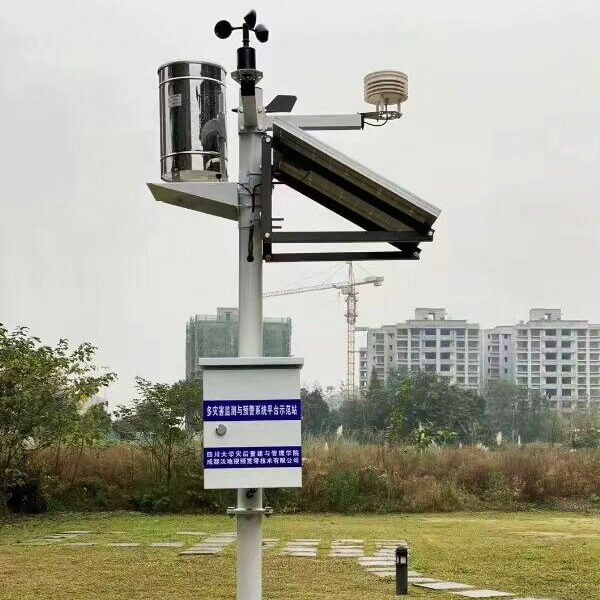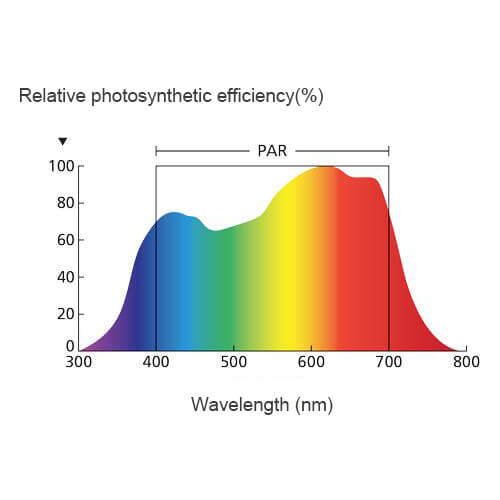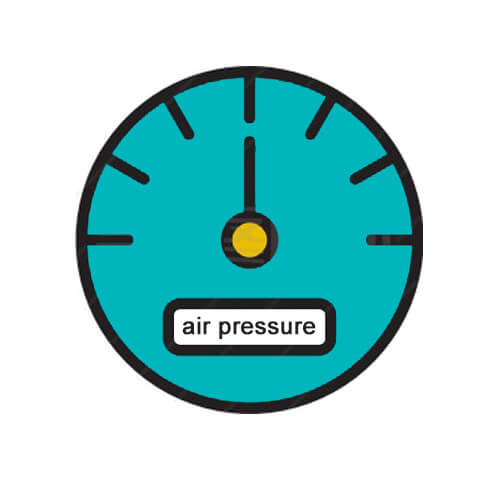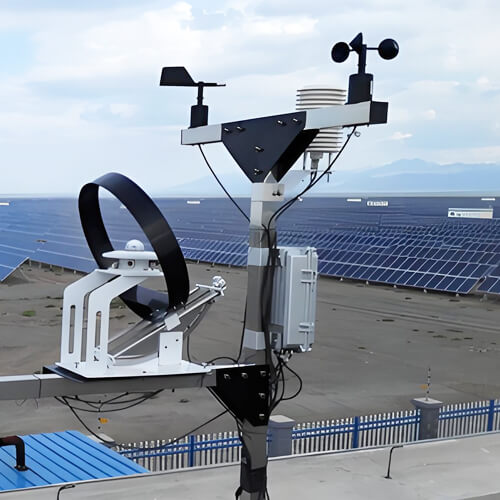Do you know where to mount weather station?
The weather station should be installed as far as possible on the open ground without any obstructions, or 10 feet above the top of the surrounding buildings. Choosing the correct address is the most important step in the weather station installation project because it determines the accuracy of the measurement data.
When choosing the location of the weather station, you need to consider its impact on wind speed and direction sensors, temperature and humidity sensors, solar radiation sensors, rain gauges, rain and snow sensors, etc. If there are obstructions around and close to the weather station, it will affect the measurement of wind speed and direction. If the weather station is installed under a tree or there is an obstruction on top of it, your rainfall measurement will be biased. If the bottom is not installed flat, the overall weather station tilt will also affect the measurement accuracy.
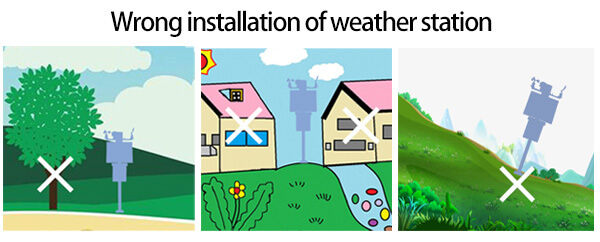
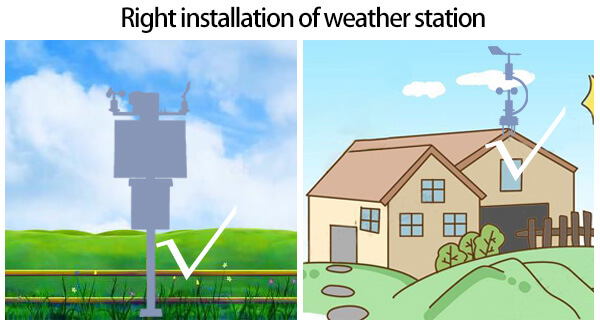
Best place to put weather station sensors
1. Temperature and humidity sensor installation
The temperature and humidity sensor should be installed at 10 feet from the ground as the best measurement position. There are no obstructions or heat-dissipating objects around it, and there is no shadow for 24 hours a day. The surface of the support plate where the temperature and humidity sensor is installed should be rough, not reflective, and not dark. Clean the sensor housing once a year in a normal environment, and clean the housing once every three months in high sandy areas to reduce measurement errors.
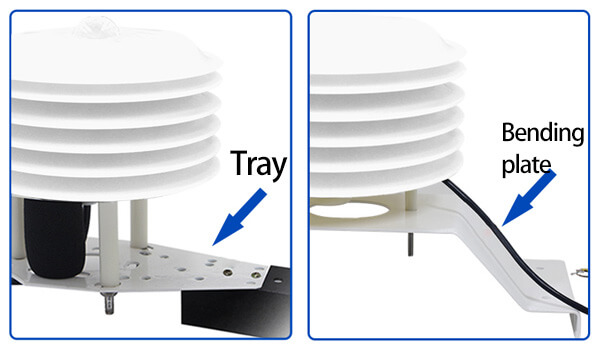
If there is no obstruction within a radius of 330 feet around the weather station, it can be installed on a pole 10 feet above the ground. If there are buildings or shelters around, they should be installed at a height of 10 feet from the top of the tallest surrounding building. The purpose is to reduce the influence of surrounding buildings on wind speed and direction.
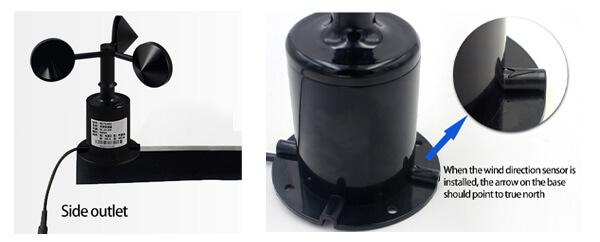
3. Rain gauge installation
The rain gauge should be installed at a height of 10 feet from the ground with no obstructions around and on the top. When installing, make sure that the rain gauge stands perpendicular to the beam and the beam is parallel to the ground. As we all know, if the rain gauge is tilted, the measurement will occur error. The rain gauge should be cleaned as regularly as possible. In windy weather, leaves and sand are prone to fall into the funnel and block the leak.
4. Rain and snow sensor installation
The rain and snow sensor can be installed on a beam 10 feet above the ground to ensure that there is no obstruction on the top. Install the sensor at an angle of 15° to help water or snow slip off. If there is icing on the top, the sensor can melt the ice into the water through the automatic heating function to make it fall, so as not to affect its winter use.
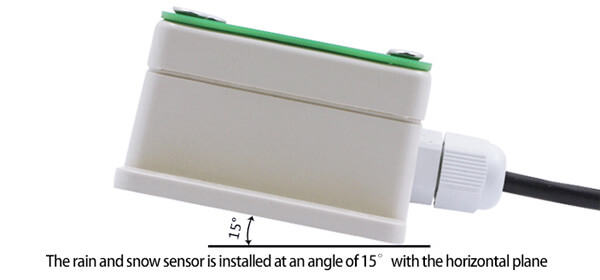
5. Solar radiation sensor installation
The installation environment of the solar radiation sensor must ensure that there is no shadow obstruction 24 hours a day, and there is no sun refraction around it. Try to install it horizontally as much as 10 feet above the top of surrounding buildings. For environments with high dust concentrations, the surface of the sensor can be wiped regularly. Prevent the falling dust from being too thick and affecting accuracy.
6. Negative oxygen ion detector installation
It is best to install the negative oxygen ion detector vertically in a waterproof box 7 feet away from the ground. After installation, make sure that the hole at the bottom of the waterproof box is unobstructed. Perform a calibration before measuring.
7. Soil sensor installation
There are two ways to install the soil sensor: one is to insert the probe of the soil sensor vertically into the soil (the depth should be ≥7cm), avoiding rocks and hard objects. The other is to dig a 20cm deep soil pit, insert the soil sensor probe horizontally into the pit and fill it with compaction.
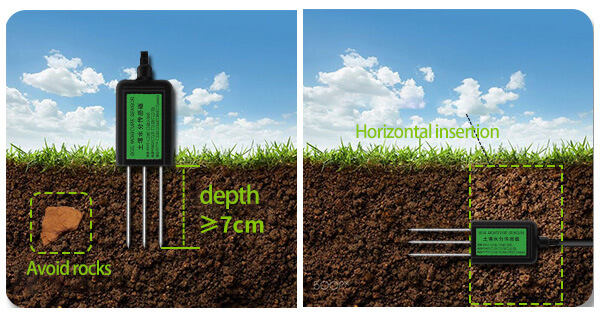
8. Noise and PM sensors installation
The noise and PM sensor modules can be installed in the same weather station radiation shield, on a beam that is 10 feet above the ground to ensure airflow around the opening. It is recommended to clean the case regularly in a high dust environment.
If you still have questions about some installation details, please watch the specific weather station installation video below, or contact us to provide you with professional technical services.
Choose a Most Suitable Weather Station is very important for you, right?
When purchase a weather station device, you should choose the most suitable iot weather station based on your needs and use environment. This will not only meet your requirements but also save capital costs.
1. Professional weather station
A professional weather station is a complete and accurate weather station measurement system, which can accurately measure more than 20 environmental factors such as oxygen ions, evaporation, light, solar radiation, and ultraviolet rays. And can record and upload monitoring data in real-time. The monitoring data of this kind of weather station is accurate and reliable, and it is especially suitable for agricultural, environmental, and animal husbandry, and other industries.
2. Portable weather station
The portable meteorological station is an automatic home weather station. Compared with professional weather stations, it can measure 7 common weather elements. The portable weather station is simple to install, occupies a small space, and has a stable signal. It is very suitable for installation on the top of buildings, rugged mountains, or small courtyards to monitor environmental data.
3. Ultrasonic weather station
The ultrasonic weather station is a new type of international weather station. Its appearance design is simple and compact, simple installation, exquisite appearance, IP68 protection level can effectively resist rain, snow, and ultraviolet rays. The common ones are traffic weather stations, mine weather stations, and marine weather station for boats.
Detailed comparison table of various weather stations
| Professional weather station | Portable weather station | Ultrasonic weather station |
| USD: 699~1299 | USD: 286.6~505 | USD: 435~638 |
 |  |  |
| RS-QXYL-M | RS-FSXJT-N01-1 | RS-FSXCS-N01-1 |
| Wind speed&direction Rainfull Temperature Humidity PM2.5&PM10 Illumination Air pressure Sun radiation Rain&snow Negative oxygen ions Soil T+H+EC UV Noise CO2 | Temperature Humidity Wind speed&direction PM2.5&PM10 CO2 Air pressure Illumination Noise Rainfall(Optional) | Temperature Humidity Wind speed&direction PM2.5&PM10 CO2 Air pressure Illumination Noise Rainfall(Optional) |
| 1. It can be connected with solar panels and batteries to form an internal power supply system without an external power supply. 2. It can measure a variety of environmental factors, and the data is more accurate. 3. The built-in environment host can actively query data and upload it to the user platform to realize remote monitoring. There is an over-limit alarm function, which will remind users in the form of SMS and email. 4. The weather station has a high degree of protection and a wider range of applications. | 1. The portable weather station is small in size and can be installed in a wider range of locations. 2. Customers can choose elements according to their own needs, and the design is more suitable for users’ needs. 3.485 output mode, the signal is more stable, and the data upload is fast. 4. Simple installation and low cost. 5. The product has a beautiful appearance and a long service life. | 1.The measurement method of the ultrasonic weather station determines its higher accuracy. 2. Simple appearance, easy to clean and maintain, and easy to install. 3. IP68 high protection level, can be used in a variety of severe weather. 4. Built-in electronic compass, no need to calibrate when changing the place of use frequently. 5. The product has a long service life and low cost. The measurement elements should be selected according to the usage. |
| Buy now | Buy now | Buy now |

